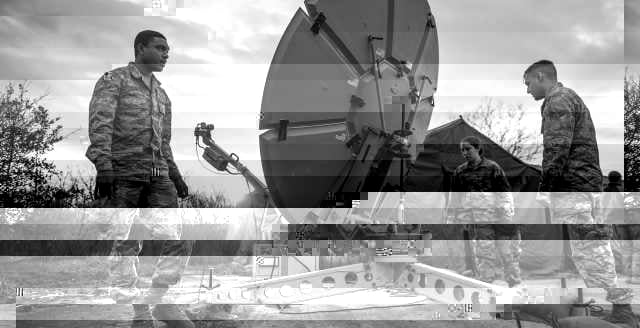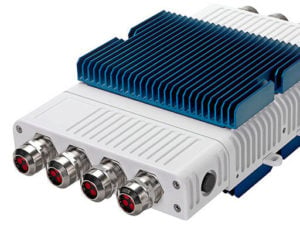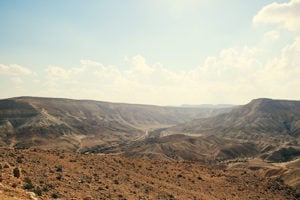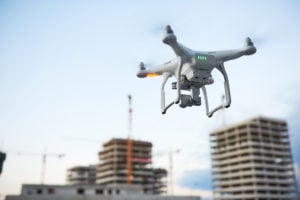
Why 40GHz Matters
Millimeter-wave (mmWave) communication systems are coming into widespread use, specifically because the RF spectrum is highly congested, and we need more of it to deal with increasing data demand. MmWave helps both with new spectrum allocations, and efficient spectrum re-use. MmWave (strictly between 30GHz to 300GHz, but more loosely referred to as frequencies above about 20GHz) is characterized by wider bandwidths, higher signal attenuation, shorter range and narrower beamwidths than at lower frequencies. Advances in semiconductor technology have helped to bring down the price of mmWave transceivers and filters, as well as the processors to transport and switch the increased volumes of data. Also, the shorter wavelength means that antennas will be physically smaller than in the lower frequency bands.
Unaware = Unguarded
 There are many advantages to using mmWave and it is being increasingly used for applications such as point-to-point microwave links, fixed wireless access, 5G mobile coverage infill, Ka-band satellite links and various radar applications (automotive, perimeter protection, and military radar). As mmWave bands become more widely used, RF spectrum monitoring receivers need to follow the trend into the higher frequencies. Being deaf to these bands leaves a gaping hole in the observable spectrum and will leave users vulnerable to interference or suspicious activity. CRFS has responded to the challenge with a new, rugged 40GHz receiver which can operate outdoors in all weather, 24/7 continuously monitoring these bands. The question is how best to make use of this new capability: how should it be deployed most effectively?
There are many advantages to using mmWave and it is being increasingly used for applications such as point-to-point microwave links, fixed wireless access, 5G mobile coverage infill, Ka-band satellite links and various radar applications (automotive, perimeter protection, and military radar). As mmWave bands become more widely used, RF spectrum monitoring receivers need to follow the trend into the higher frequencies. Being deaf to these bands leaves a gaping hole in the observable spectrum and will leave users vulnerable to interference or suspicious activity. CRFS has responded to the challenge with a new, rugged 40GHz receiver which can operate outdoors in all weather, 24/7 continuously monitoring these bands. The question is how best to make use of this new capability: how should it be deployed most effectively?
Spectrum monitoring and interference
 In both military and civilian settings, monitoring the use of mmWaves, and any sources of potential interference, is fundamental. In order to be certain that interfering signals are not missed due to their narrow beamwidths, or blocked out by clutter, the mmWave monitoring receiver should be positioned as close to the protected asset as possible. A protected asset is any highly sensitive receiver. This could include Ka-band satellite ground stations, spacecraft launch sites and radio telescopes.
In both military and civilian settings, monitoring the use of mmWaves, and any sources of potential interference, is fundamental. In order to be certain that interfering signals are not missed due to their narrow beamwidths, or blocked out by clutter, the mmWave monitoring receiver should be positioned as close to the protected asset as possible. A protected asset is any highly sensitive receiver. This could include Ka-band satellite ground stations, spacecraft launch sites and radio telescopes.
When monitoring RF spectrum on a military test range, spectrum usage, location and occupancy might be the prime concern. So, when observing the use of a mmWave transmitter, for example a fire control radar, the monitoring receiver would ideally be positioned directly in the path of the transmission. This again is because of the narrow beamwidths involved.
5G telecommunications
 For 5G networks, mmWave bands are used for backhaul links (point-to-point and point-to-multipoint), mobile coverage in-fill and indoor small cells. Cellular handsets from Samsung and other manufacturers are beginning to add mmWave support. Due to the limited range of 5G mmWaves, a spectrum monitoring receiver needs to be deployed as close to the 5G base station as possible, in order to monitor any potential interference.
For 5G networks, mmWave bands are used for backhaul links (point-to-point and point-to-multipoint), mobile coverage in-fill and indoor small cells. Cellular handsets from Samsung and other manufacturers are beginning to add mmWave support. Due to the limited range of 5G mmWaves, a spectrum monitoring receiver needs to be deployed as close to the 5G base station as possible, in order to monitor any potential interference.
UAS/Drones
 Some sophisticated models of UAS (unmanned aircraft system)/drone systems make use of obstacle detection radar, typically operating in the 24GHz band or higher. This high frequency radar helps the drone to avoid buildings and other objects, especially when the drone is flying autonomously via GPS waypoints. However, detection of these radar emissions adds a new intercept method to a counter drone system that can help improve discovery chances. This becomes especially useful if the UAV (unmanned aircraft vehicle) is flying autonomously without any RF control signals or telemetry.
Some sophisticated models of UAS (unmanned aircraft system)/drone systems make use of obstacle detection radar, typically operating in the 24GHz band or higher. This high frequency radar helps the drone to avoid buildings and other objects, especially when the drone is flying autonomously via GPS waypoints. However, detection of these radar emissions adds a new intercept method to a counter drone system that can help improve discovery chances. This becomes especially useful if the UAV (unmanned aircraft vehicle) is flying autonomously without any RF control signals or telemetry.
TSCM
 For TSCM (technical surveillance and counter-measures), detecting RF transmissions in secure facilities, the emergence of 5G mmWave and other high-frequency communications links mean that legacy RF sensors which can only capture bands up to 6GHz are insufficient to provide security. Due to the high propagation loss through building structures, it is necessary to carefully position mmwave RF sensors in areas of the building where a mmWave signal could escape from, (for example near to a window). The RFeye Node 100-40 can be used to complement other RFeye Nodes up to 8GHz and 18GHz, to cover those locations where a signal could successfully penetrate and exfiltrate data from the building.
For TSCM (technical surveillance and counter-measures), detecting RF transmissions in secure facilities, the emergence of 5G mmWave and other high-frequency communications links mean that legacy RF sensors which can only capture bands up to 6GHz are insufficient to provide security. Due to the high propagation loss through building structures, it is necessary to carefully position mmwave RF sensors in areas of the building where a mmWave signal could escape from, (for example near to a window). The RFeye Node 100-40 can be used to complement other RFeye Nodes up to 8GHz and 18GHz, to cover those locations where a signal could successfully penetrate and exfiltrate data from the building.
As mmWave communication systems become more prevalent, the requirement for a flexible spectrum monitoring solution, with high-fidelity receivers spanning up to 40GHz, increases. The RFeye Node 100-40, gives customers the peace of mind that any signal up to 40GHz will be covered. Crucially, it is a sound and future-proofed investment for effective 24/7 spectrum management.
